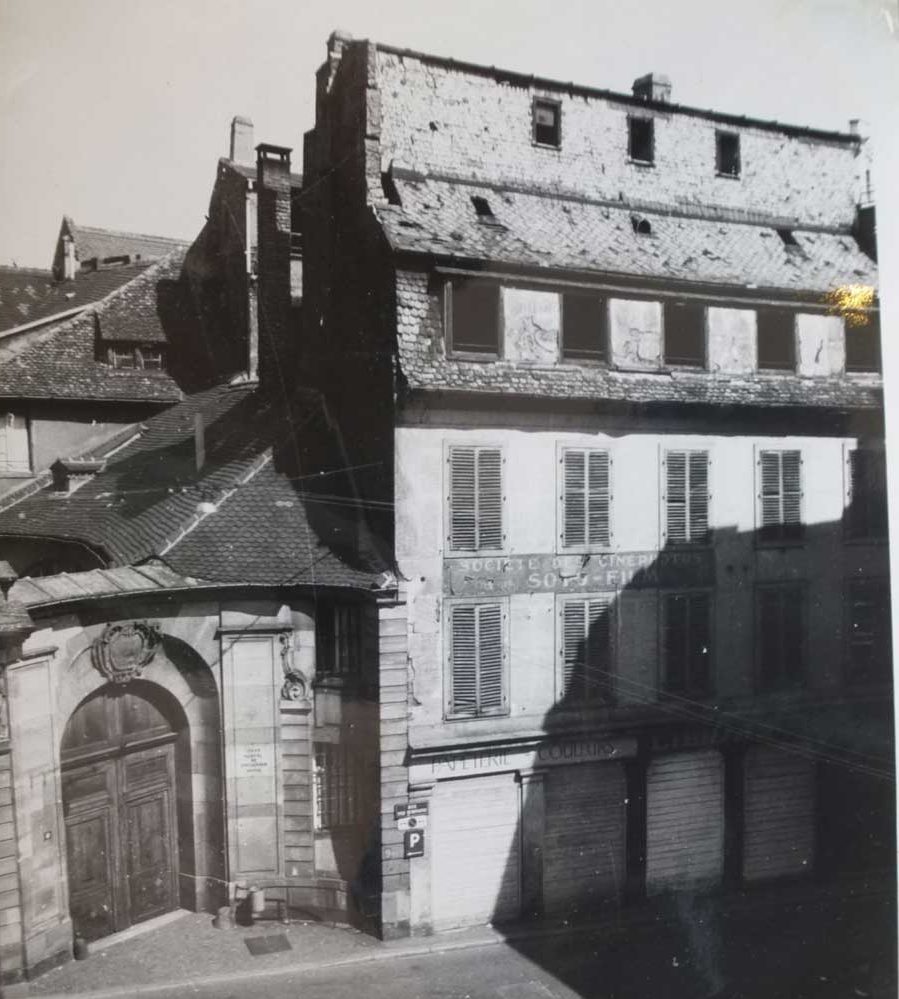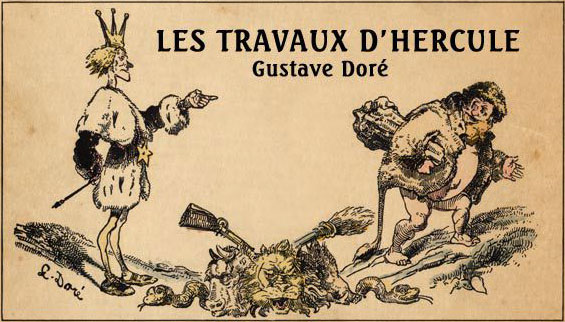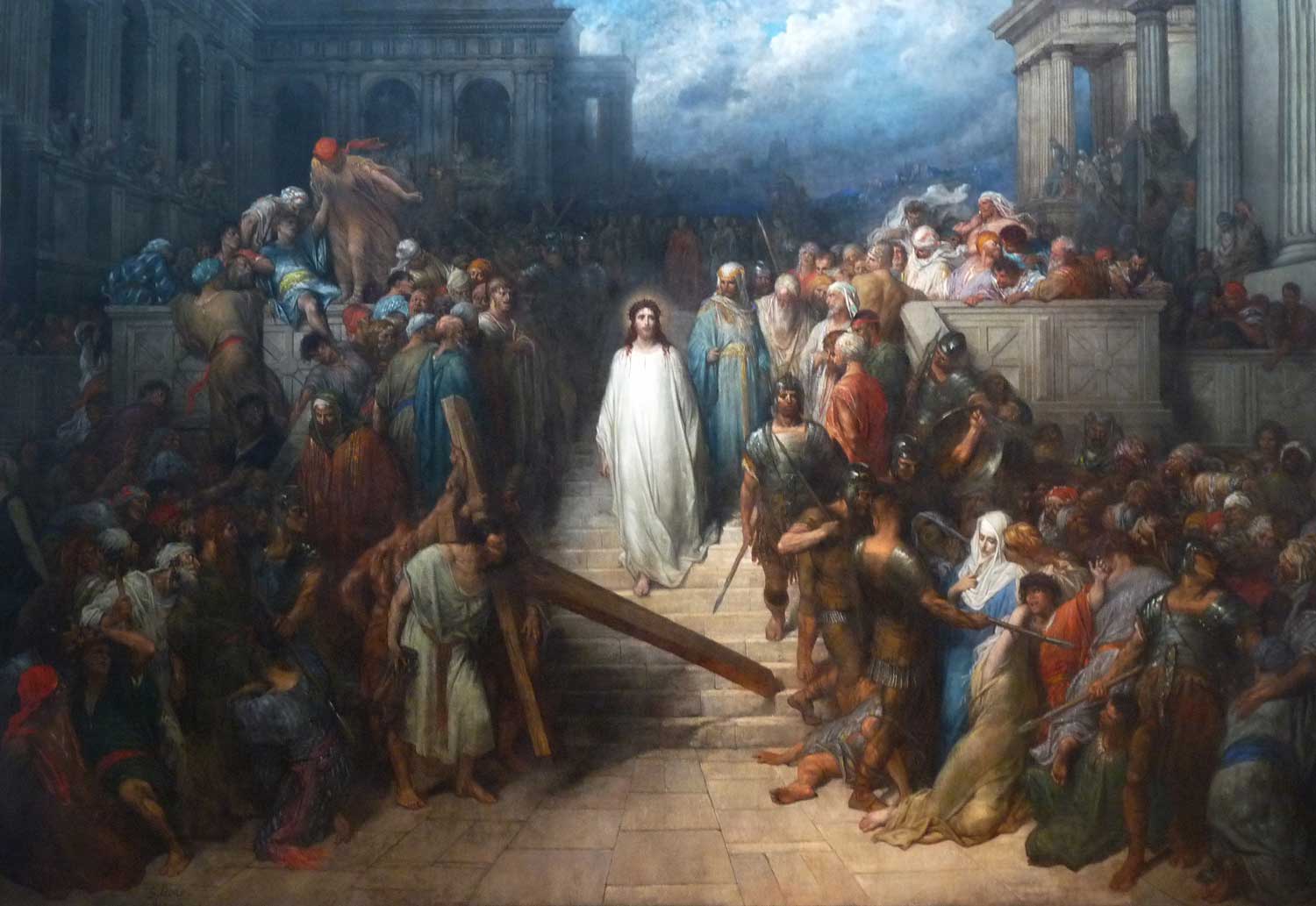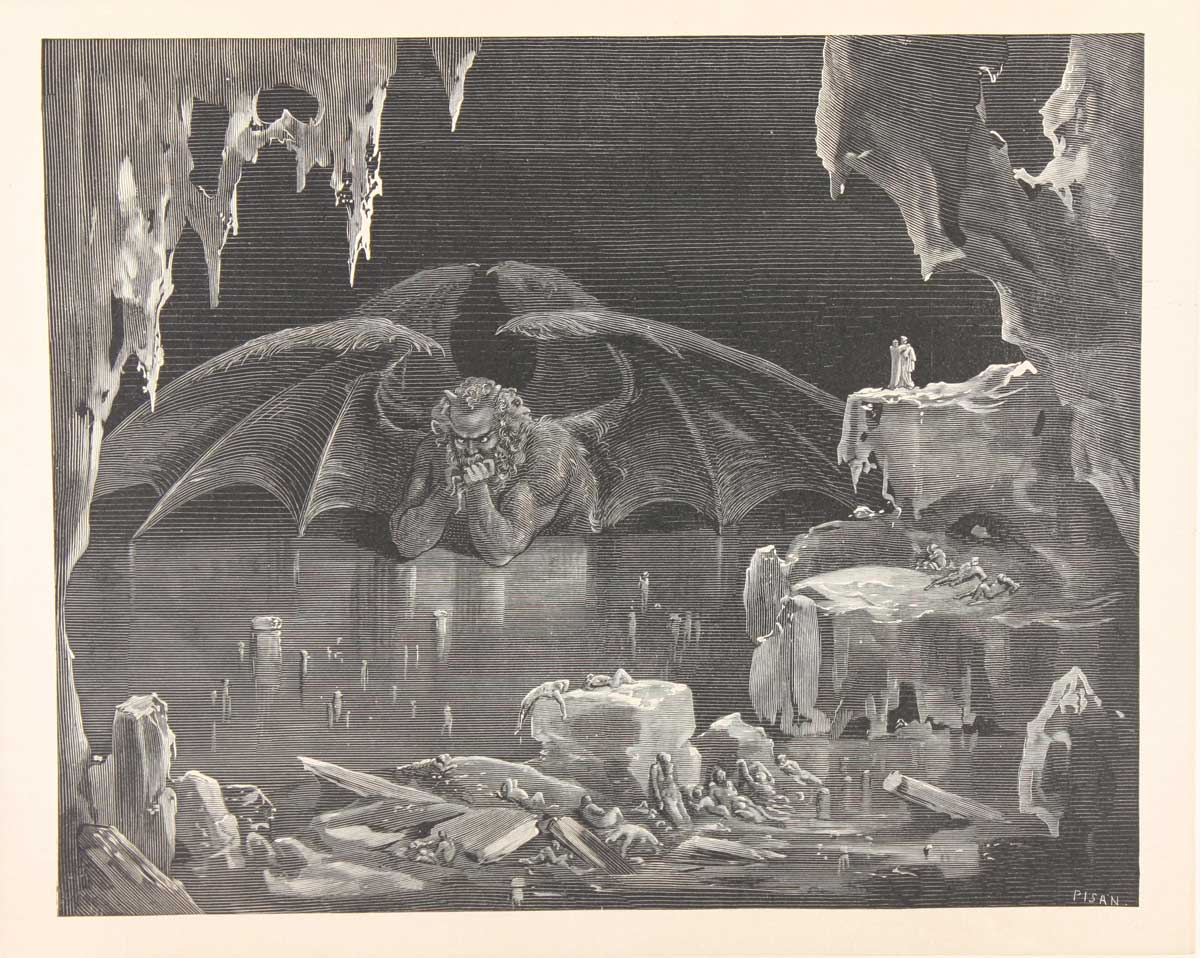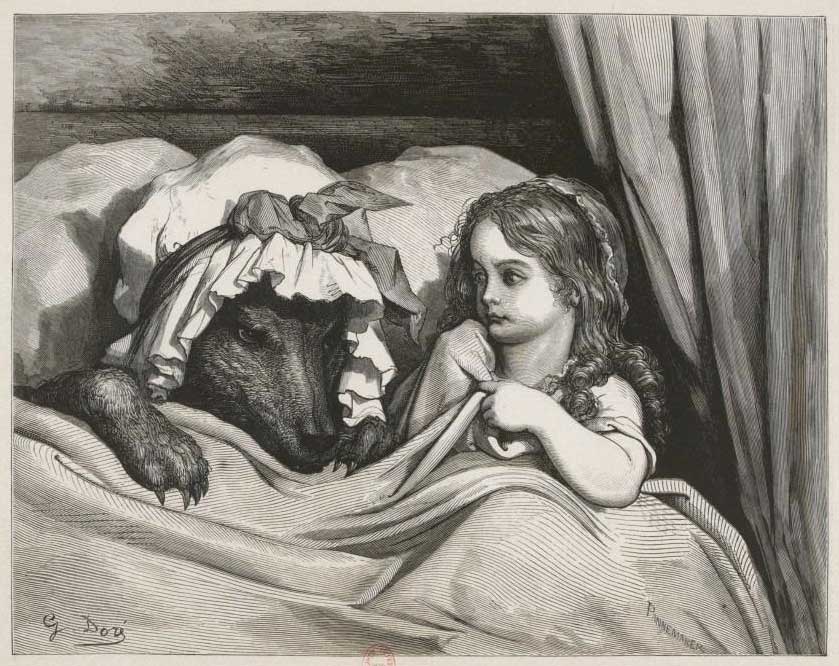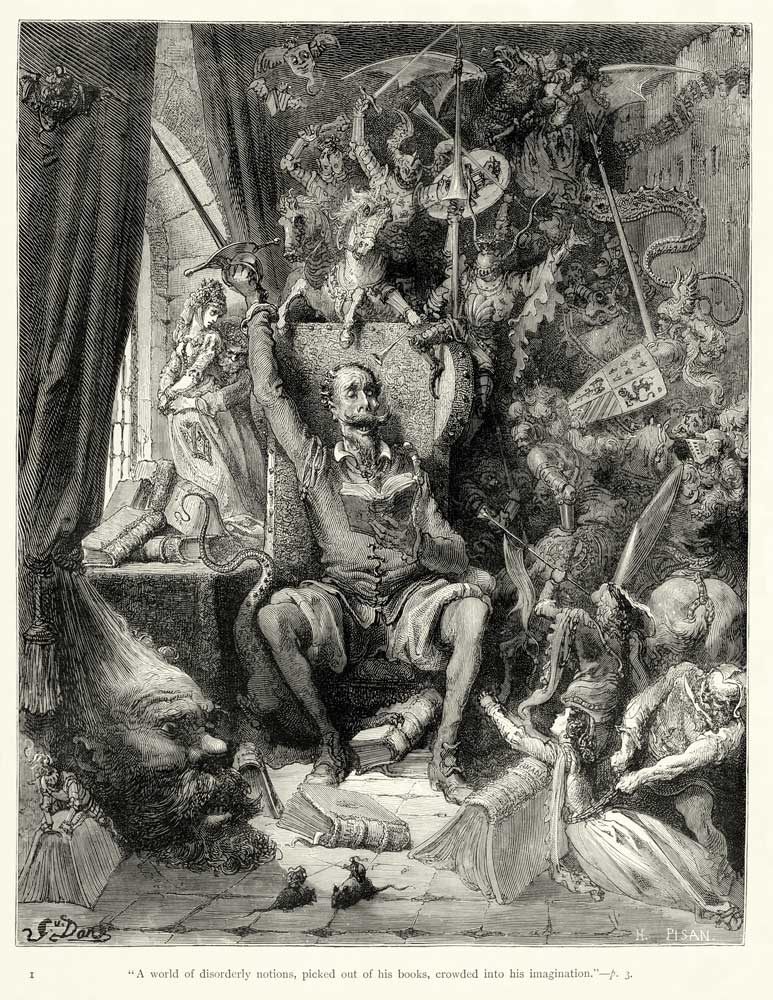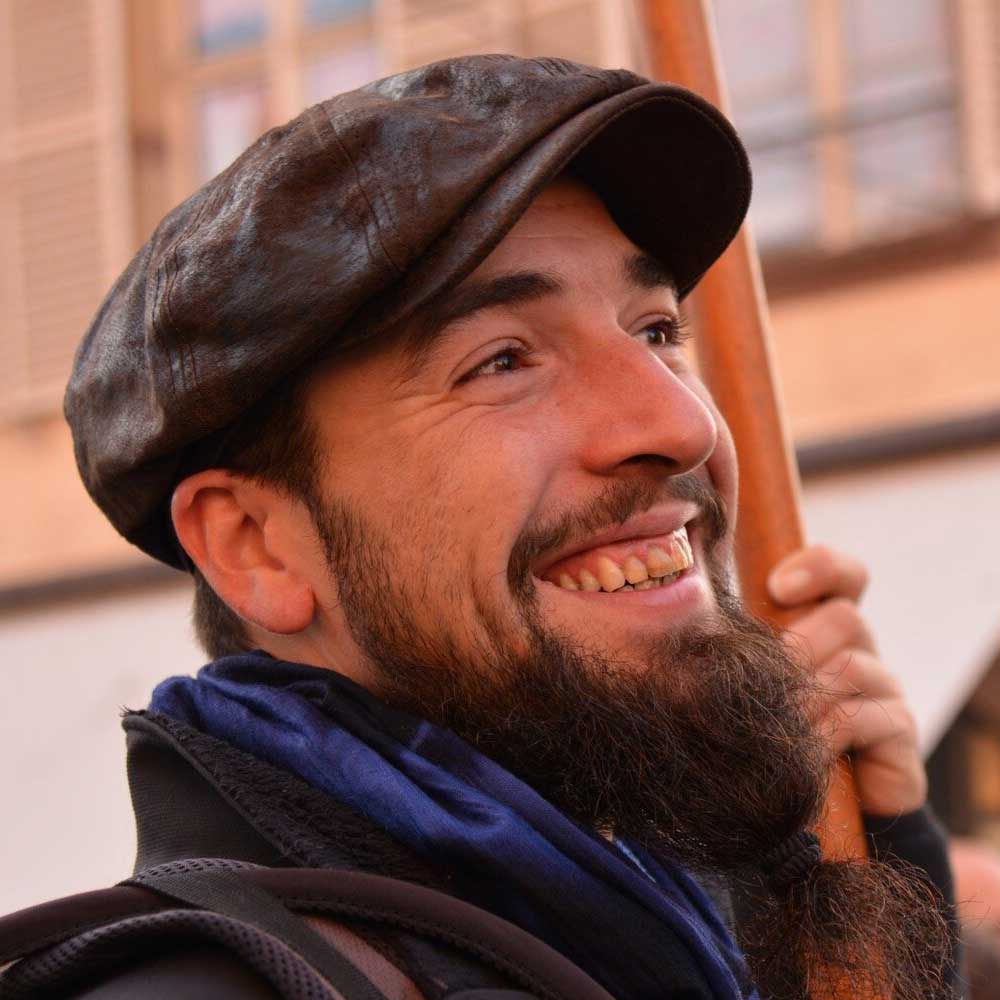A look back at Gustave Doré
born in 1832, January 6th
January 6th 2020, by Gabriel
Gustave Doré, an Alsatian and a multi-artist, who had as short a life as his work was great, was born on January 6, 1832. January 6 is the Epiphany, indeed. And so I hope you will find the lucky charm in your slice of the king cake (as a tradition in France, we eat this very specific cake on that day). But as you will understand from the title of this article, that is not my topic here. On January 6, 1832, Paul Gustave Louis Christophe Doré was born, better known in short version as Gustave Doré. On this occasion, let’s take a quick look at him.
A small introduction
So was Gustave born on January 6, 1832 in Strasbourg, in the Nuée-Bleue street, at number 5 (now number 16) and you will find a plaque indicating this information on the wall of the current number 5 – therefore it is misplaced. In the picture, you can recognize the two buildings that are next to the current n°16 if you compare them with what’s in Street View now.
Then little Gustave grew up behind the Cathedral, at the current number 6 of Écrivains street, a house called “Zum Kalb” (to the veal’s)… Formerly known as number 1, Veal street… In all logic, right?
Indeed, we have changed a lot of things regarding streets’ names and numbers. Go and take a look at the articles by our other Gustave on Strasbourg’s streets’ names, you should get the begining of an answer about it 😉
Okay, that was just to mess with you a bit, and also to mention gratuitously that we can take you there with our guided tours. It’s for SEO, Google likes it so. So go on and click, it doesn’t hurt, and you may even join our Free Tours, it doesn’t hurt either, I promise!
To put it in a nutshell, you will see that despite his talent, Gustave never received the honors he desired for his painting. That said, his first work was a hen he painted green and which terrorized the city! For the record, you will find at the end of the article a transcription of what Mr. Doré himself had to say about that story.
Despite the hen incident, little Gustave was very talented for drawing. At the age of 5, he had already produced his first caricatures, and in 1845 (age 13) his first drawings were lithographed by a printer. Two years later, while he was passing through Paris with his parents, he presented some drawings to the publisher Charles Philipon. So it was that his first album of satirical lithographs was published, “The Labours of Hercules”, when he was only 15. You’ll admit that this could be enough for a teenager to get big-headed! When his father died in 1849, the still very young Gustave had to provide for his mother and two brothers. He therefore continued his work as an illustrator and published several albums. It’s the start of his career!
Illustration and glory
Gustave Doré’s career probably ended too soon: he died at the age of 51, on January 23, 1883. But during his short life, he was not idle. There are more than 10,000 pieces to his work. Illustrations, drawings, paintings, engravings and sculptures, and it is probably for his illustrations that he is best known. Remember for instance the ones he did for Perrault’s tales. But he opened the doors to glory in 1854 by illustrating the works of Rabelais. The following year, he tackled on Balzac and his golden age extended as briefly as his life, roughly between 1861 and 1866. It was during that time that he published his illustrations of Dante’s Inferno, of Cervantes’ Don Quixote or of the Holy Bible. That said, he also worked on other litterary monuments such as Jean de La Fontaine, William Shakespeare, Edgar Poe, and so on!
Painting and despair
Despite his success in illustration, he was not satisfied (a good Alsatian is never completely satisfied in my opinion). He was a jack-of-all-trades as we saw earlier, and if he didn’t make a lot of sculptures (we know about thirty of those), it was in painting that he seeked recognition. After he passed away, a Mr Albert Wolff said of him: “No, there was not in the streets of Paris a being more unhappy than this one: he was disgusted with everything; you could not talk to him about his glory as an illustrator; that was precisely what he suffered the most from. His illustrations were always thrown at him in order to kill the painter.” It was his first love though, remember the green hen! (the anecdote is coming up, I promise ????)
But at the time, working in many different fields and not sticking to a single style was not well looked upon, even when you demonstrated a talent such as his. If you wanted to be good, you had to focus on one artistic domain only. One could not be good in several ones, that would have been presposterous! In addition, Gustave liked to work on monumental paintings like “Le Christ quittant le Prétoire”, measuring 609 x 914 cm, and that too did not appeal to the art world at the time.
His legacy
As with many great artists, recognition came posthumously. From 1855 until his death in 1883, he remained an absolute iconographic reference. His work made a strong impression on several generations of illustrators, but also on a good number of filmmakers, who fed on his magical and demonic universe, on the way he would light a scene and on his dramatic perspectives. This helped them create the most beautiful sets and characters of cinema. Here is a small, non-exhaustive list:
-
A Trip to the Moon by Georges Méliès in 1902
-
Dante’s Inferno by Henry Otto in 1924
-
Snow White’s Enchanted Wish by Walt Disney in 1937
-
The Beauty and the Beast by Jean Cocteau in 1946
-
Oliver Twist by David Lean in 1948
-
Star Wars bye George Lucas in 1977 (Yes, yes!)
-
Sleepy Hollow by Tim Burton in 1999
You can find some images and explanations on the Cinémathèque website.
It would seem also that Mylène Farmer was inspired by the artist for the staging of her 2009 tour, and I dare not believe that his great-great-grand-nephew Julien Doré (a French singer) never drew inspiration from his distant relative!
The green hen
Alright, a promise is a promise! Let Gustave himself tell you about the episode of the green hen. His words have been transcribed in The life and works of Gustave Doré, from the memories of his family, his friends and the author: Blanche Roosevelt (1887).
“I was dying to paint! While wondering what I could be doing first, I would always start by opening my tubes and putting pretty colour spots on my palette. The brilliance, the freshness, the gaiety of these colours gave me a charming tipsiness. There was mostly a green that my eyes couldn’t tear away from. Veronese green in all its glory! But what to paint? What to paint? As I was pondering this question, my eyes fell on a poor little hen, quite pretty in form, but with dirty white plumage, innocently pecking beside me. This hen was awful. I resolved to repair this fault without further delay. The hen did make some difficulties. It didn’t understand, the beast, that I was working for its good. But I was tenacious; soon it was perfect. All my Veronese green went there! But also, what a beautiful hen! It was a pleasure to see it come and go with its beautiful new dress, shiny, so fresh as to defy any and all green things around.
I enjoyed contemplating my work for a while, then I went back to bed to fix a sleepless night. Two or three hours later, I was awakened with a start by an unusual noise, cries, moans. Peasants and good women have gathered in front of the house; some raise their arms to the sky, some weep, others express deep despair and awe by disorderly gestures . And, in the middle of them, my hen! When it starts to come forward, they move away in terror. I understand everything then. I remember a legend from the country where the green hen plays a terrible role; when it appears, all plagues threaten the village: it is the loss of harvests, the plague in the stables, the epidemic in the houses. This is why the village went into a riot. A woman falls, seized with a nervous breakdown. I do not hesitate. I run to find the master of the house and I make him a full confession. It took my father’s friend over an hour to make the peasants understand that this hen was by no means sent by a bad angel, and that it was quite simply my first painted work. He only succeeded by showing the horribly flattened Veronese green tube.”
Personally, I laughed a lot while reading this passage!
I hope you learned a little about this famous Alsatian, born on January 6. I leave you now with a last link to the Wikiart site which lists in images a small part of Mr Doré’s works (759 of them still), enjoy! ????
And if you visit the Père-Lachaise cemetery, come and see his grave, death is not just about Jim Morrison… I mean life of course!



